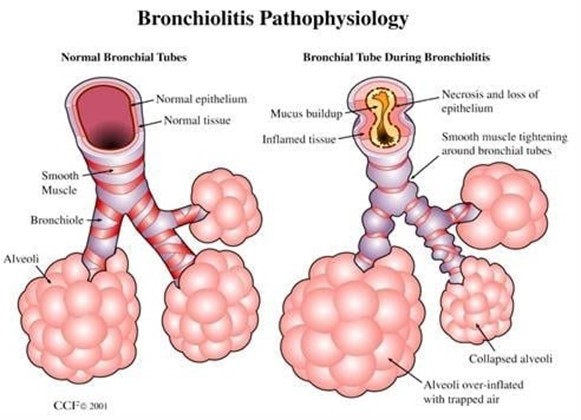A 3-month-old with bronchiolitis is brought to the clinic experiencing irritability and poor oral intake. Which finding should alert the practical nurse (PN) that the child is in acute respiratory distress?
Flaring of the nares.
Resting respiratory rate of 35 breaths/minute.
Bilateral bronchial breath sounds.
Diaphragmatic respirations.
The Correct Answer is A
Flaring of the nares, or widening of the nostrils, is a sign of respiratory distress in infants. It indicates that the child is working harder to breathe. This finding should alert the practical nurse (PN) that the child with bronchiolitis is in acute respiratory distress.
A resting respiratory rate of 35 breaths/minute (B) is within the normal range for a 3-month-old infant. Bilateral bronchial breath sounds (C) and diaphragmatic respirations (D) are not specific signs of acute respiratory distress in infants.

Nursing Test Bank
Naxlex Comprehensive Predictor Exams
Related Questions
Correct Answer is B
Explanation
Detoxification can be a difficult and potentially dangerous process, and it's important for the client to receive proper monitoring and medication management during this time. The hospital is equipped to provide this level of care and support. The practical nurse should explain this to the client and emphasize the importance of receiving proper care during detoxification.
Correct Answer is B
Explanation
The action by the PN that is likely to facilitate accurate responses to personal and social history questions is to **request that the mother leave the exam room**. The personal and social history contains many areas of special sensitivity to adolescents including such issues as drug and alcohol use and sexual activity. The teen should provide the personal and social history, not the parent⁴.
Whether you are a student looking to ace your exams or a practicing nurse seeking to enhance your expertise , our nursing education contents will empower you with the confidence and competence to make a difference in the lives of patients and become a respected leader in the healthcare field.
Visit Naxlex, invest in your future and unlock endless possibilities with our unparalleled nursing education contents today
Report Wrong Answer on the Current Question
Do you disagree with the answer? If yes, what is your expected answer? Explain.
Kindly be descriptive with the issue you are facing.
